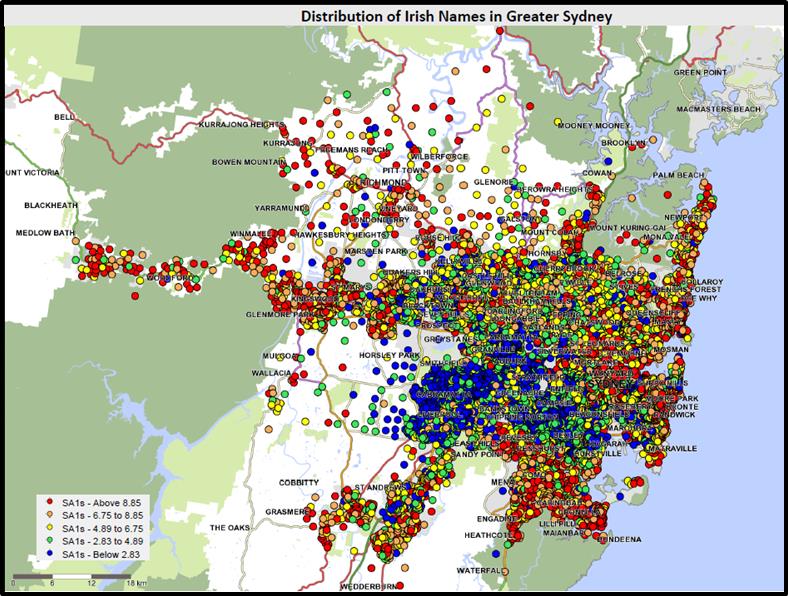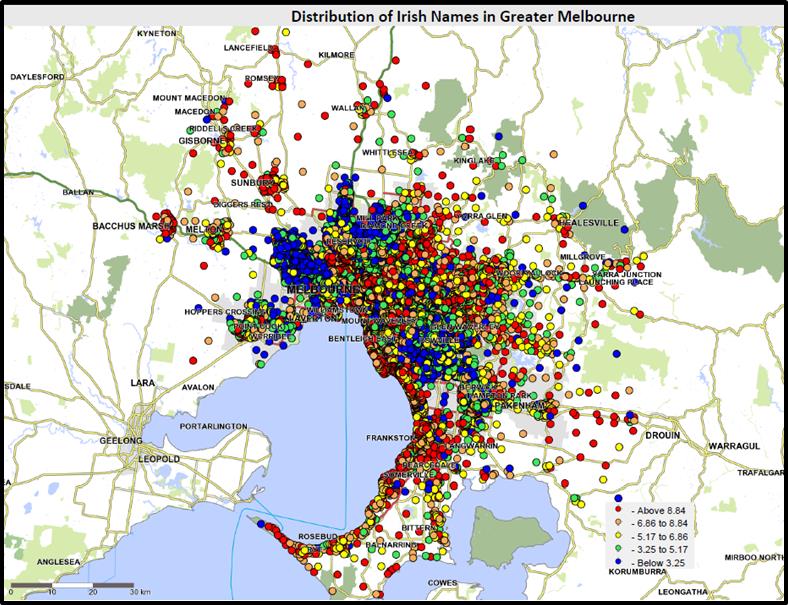Last week’s celebration of all things Irish on St Patrick’s Day prompts us to consider some characteristics of Irish names.
Ireland was one of the first countries in Europe to have a system of surnames that passed from one generation to the next. This began in the ninth century and it is likely that all Irish people would have a surname by the end of the 12th century. Surnames are generally patronymic, although it is not always obvious from the current form of the name.
Various waves of settlement and colonisation, notably from the Vikings, the Normans, the Welsh and the Cornish, have all left their mark on the form of names associated with the Irish. For example, McManus (derived from Magnusson), FitzGerald (using the Norman prefix of Fitz (“fils de” or “son of”), Walsh (or “Breathnach”, indicating a person of Welsh descent).
A man’s surname generally takes the form O (originally “grandson”) or Mac (“son”, often abbreviated to Mc) followed by the ancestor’s given name, as in O’Donald (grandson of Dónall or Donald) or MacNamara (“son of Conmara”). The female equivalent was traditionally Ni and Nic respectively although in most cases, the male form has been adopted.
Penal laws enforced by the later English colonists caused many Gaelic names to be anglicised, many of which resulted in misinterpretation and misspelling. With extensive 19th century migration to Britain, the US, Canada and Australia, further transcription errors and low literacy levels created a set of names that now vary widely from their original form.
Nationalist sentiment since the late 1800s has seen resurgence in the use of Gaelic name styles and, especially in the case of given names, this extends well beyond Irish shores. Traditional names such as Grainne, Aine, Cathal and Padraig, or Irish versions of Norman names such as Sean, Siobhan, and Sinead have become increasingly common over the past few decades.
Spikes in name popularity often occur in response to contemporary events and many Irish girls were named Bernadette and Theresa in response to the canonisation of those saints in the 1950s. However, the popularity of the royal family at that time inspired even larger number of Elizabeths and Margarets, especially in Australia.
The most popular Irish family names in Ireland are Murphy, Kelly and O’Sullivan. In Australia, the OriginsInfo national file shows that the top three names of Irish origin are Ryan, Kelly and Murphy, while the top three names of Northern Irish origin are Boyd, Rice and Shannon.
The accompanying maps show the distribution of people with Irish names in Sydney and Melbourne. In Sydney, they are more likely to be found in the southern suburbs, the inner east/south, northern beach-side suburbs, and along the A32 through the Blue Mountains west of Penrith. In country NSW, there is a preference for the triangular pastoral lands defined by Dubbo, Lithgow and Wagga Wagga.

In Melbourne, people with Irish names concentrate in the north east – Heidelberg, Greensborough and Diamond Creek – the Ringwood/Croydon area, bayside suburbs from St Kilda to Frankston and satellite communities such as Sunbury, Bacchus Marsh and Gisborne. In the rest of the state, there are strong concentrations in the Western Districts (including Colac, Warrnambool and Port Fairy), as well as Bendigo, Kyabram and Swan Hill.

OriginsInfo uses the most advanced and complete analysis methods to identify (around 85% accuracy) the cultural origin of names. By overlaying this data to suburbs, cities or broader populations, organisations gain a complete picture of who their customers are … and could be.
Back to blog